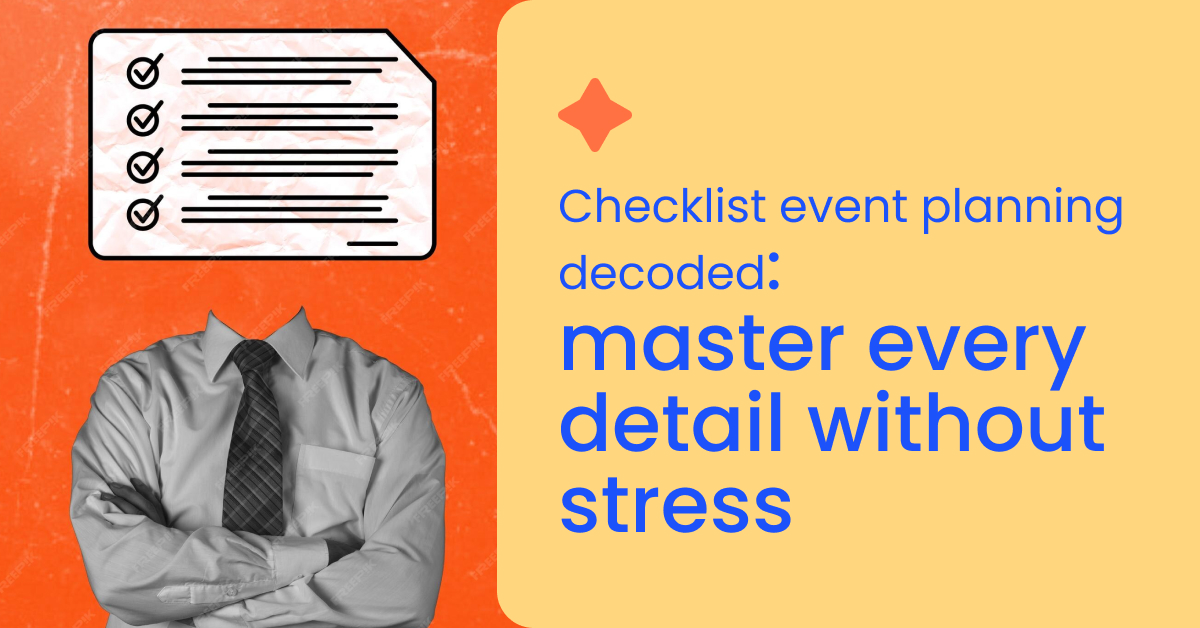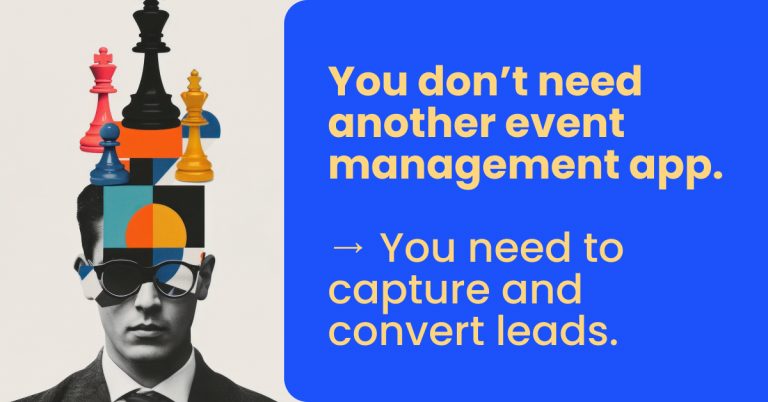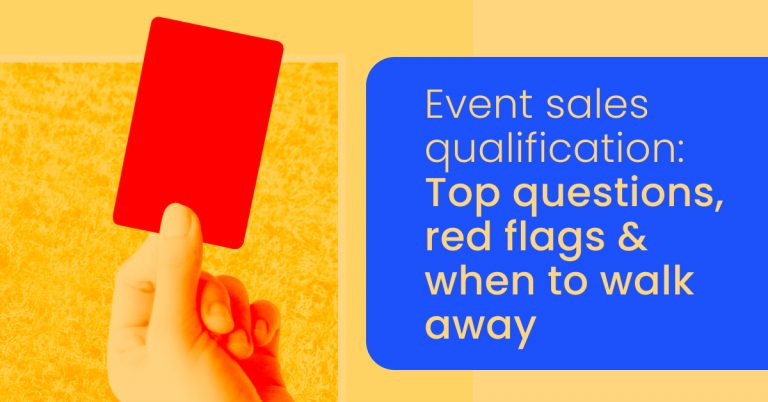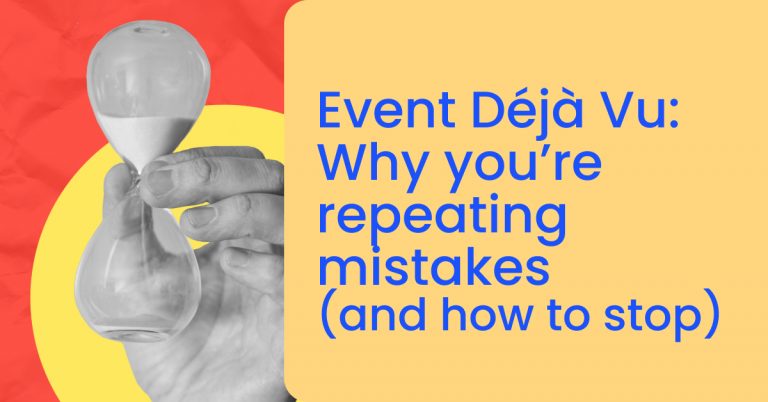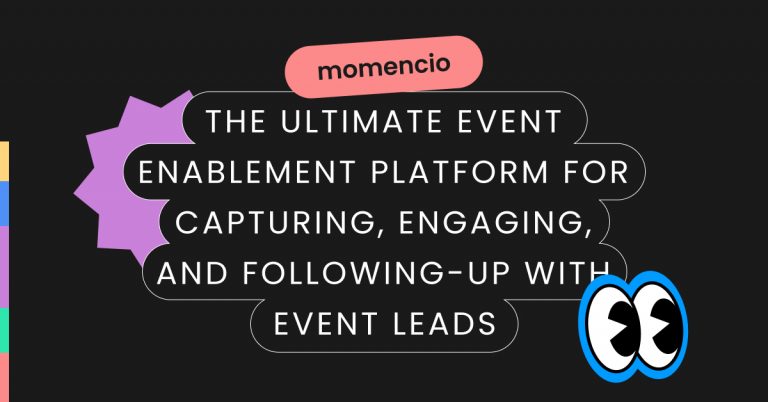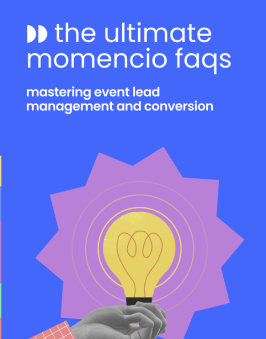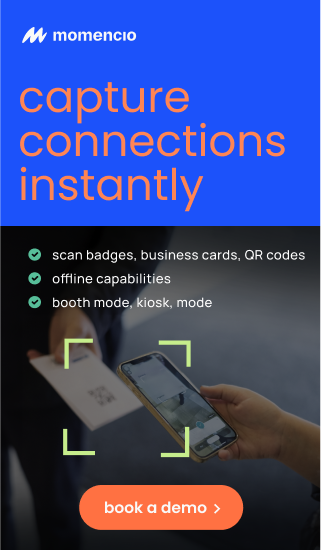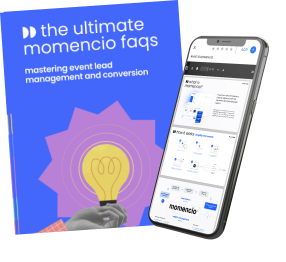Planning an event feels like juggling a thousand moving pieces—venue bookings, vendor coordination, attendee management, and last-minute surprises. Even experienced planners know that one missed detail can turn an event into chaos.
That’s why having a checklist event planning system isn’t just helpful—it’s critical. The right checklist keeps your event organized, stress-free, and on track for success. But a generic to-do list won’t cut it. You need a checklist that adapts to real-world challenges.
TL;DR
Event planning is overwhelming when details are missed. A checklist event planning strategy ensures every stage—budgeting, vendors, logistics, and marketing—runs smoothly. This guide provides a step-by-step breakdown so you can execute stress-free events with confidence.
This guide isn’t just another planning list—it’s your decoded blueprint for event success. Let’s break down every phase of event planning, from the first idea to post-event wrap-up, so you never feel overwhelmed again.
The event planning chaos: Why missing details lead to failure
Event planning is a high-stakes game where one overlooked detail can lead to disaster. Whether it’s a missing speaker, a double-booked venue, or a last-minute tech failure, the smallest misstep can ripple through an event and leave attendees frustrated.
- The domino effect of poor planning
Skipping a simple step—like confirming vendor arrival times—can lead to a chain reaction of issues. If vendors are late, setup is delayed. If setup is delayed, sound checks are rushed. If sound checks are rushed, the keynote speaker’s mic doesn’t work. And suddenly, a polished event turns into an unprofessional mess.
- Budget overruns and unexpected expenses
Failing to track every cost can lead to unplanned expenses that eat into event profits. Without a detailed budget checklist, planners risk overspending on catering, last-minute venue changes, or extra staffing—jeopardizing overall event ROI.
- Poor communication leads to confusion
A successful event relies on seamless communication between teams, vendors, and stakeholders. When details aren’t documented in a central checklist, important tasks get lost, leading to misalignment on schedules, responsibilities, and expectations.
- The attendee experience suffers
A missing signage plan? Confusing registration desks? These seemingly small oversights frustrate attendees and impact their perception of the event. A checklist ensures that every touchpoint—from first impressions to post-event follow-ups—is intentional and well-executed.
- Last-minute stress skyrockets
Without a clear roadmap, last-minute surprises pile up, leaving event planners scrambling to fix avoidable mistakes. A well-structured checklist event planning strategy eliminates the guesswork, reduces stress, and keeps planners in control.
Missed details can make or break an event. The solution? A comprehensive event planning checklist that ensures no step is overlooked.
The ultimate checklist event planning breakdown
A well-structured checklist is the difference between a seamless event and a chaotic disaster. This comprehensive, step-by-step checklist ensures that every aspect of your event—from conceptualization to follow-up—is accounted for.
1. Pre-event planning: setting the foundation
Every successful event begins with a solid foundation. Without clear goals, a defined audience, and a structured timeline, the planning process becomes aimless and overwhelming.
Key steps:
- Define the event’s purpose and objectives (lead generation, networking, education, brand awareness).
- Identify your target audience—who are you trying to reach?
- Select a date and venue that aligns with your audience and event size.
- Build a project timeline with key deadlines for tasks like vendor booking, marketing, and ticket sales.
- Create an event planning team with clear roles and responsibilities.
2. Budgeting and logistics: Avoiding financial surprises
Financial mismanagement can derail even the most exciting event. Having a realistic, well-tracked budget ensures that spending stays under control.
Key steps:
- Outline all expected expenses, including venue, catering, AV, staff, and promotions.
- Allocate a buffer fund for unexpected costs (typically 10-20% of your total budget).
- Request vendor quotes early and compare pricing to secure the best deals.
- Establish payment schedules to avoid last-minute financial constraints.
- Use budget tracking software to monitor real-time spending.
3. Vendor coordination: Keeping everyone aligned
Vendors are the backbone of any event—AV technicians, caterers, decorators, and rental suppliers all play a critical role in execution. Poor coordination can lead to late deliveries, setup issues, or even service failures.
Key steps:
- Confirm contracts, deposits, and service expectations well in advance.
- Schedule a walkthrough with vendors at the venue before the event.
- Designate a point-of-contact for each vendor to handle last-minute changes.
- Ensure backup options are available in case of cancellations or delays.
4. Marketing and promotion: Ensuring maximum attendance
A well-planned event is meaningless without attendees. Effective marketing strategies ensure high engagement and attendance rates.
Key steps:
- Develop a multi-channel marketing plan (email, social media, partnerships, paid ads).
- Leverage event registration platforms like Eventbrite or Cvent for seamless ticketing.
- Create a content calendar with countdowns, teasers, and behind-the-scenes updates.
- Engage with potential attendees via live Q&As, influencer collaborations, and email sequences.
- Utilize early bird pricing and limited-time offers to boost registrations.
5. On-site execution: The big day done right
The event day is where planning meets reality. Having a structured checklist ensures that everything runs according to plan.
Key steps:
- Conduct a final venue walkthrough before attendees arrive.
- Have an hour-by-hour event agenda for staff, vendors, and speakers.
- Ensure registration desks and signage are visible and organized.
- Assign team members to handle attendee inquiries, logistics, and emergencies.
- Use real-time event management software to track attendance and troubleshoot issues.
6. Post-event wrap-up: Turning insights into future success
An event doesn’t end when attendees leave. Post-event follow-ups and analysis turn insights into opportunities for growth.
Key steps:
- Send thank-you emails to attendees, sponsors, and speakers.
- Distribute post-event surveys to gather feedback.
- Analyze attendance data and engagement metrics to measure success.
- Schedule a debrief meeting with your team to review what worked and what didn’t.
- Repurpose event content (videos, testimonials, recaps) for ongoing marketing.
Common mistakes event planners make (and how to avoid them)
Even the most seasoned event planners find themselves making mistakes—sometimes small, sometimes catastrophic. The truth is, event planning is like orchestrating a live performance where anything can go wrong at any moment. But those who succeed don’t just have a plan—they have a plan for when the plan falls apart. Let’s break down the most common missteps and how to sidestep them.
1. Underestimating the power of time (or overestimating your ability to control it)
Time is an event planner’s greatest enemy and best friend. Too often, planners think they have “plenty of time” only to find themselves drowning in last-minute logistics. Venues book up months in advance, vendors get fully scheduled, and marketing efforts need time to gain traction. If you’re starting late, you’re already losing.
How to outsmart time:
- Work backward from the event date and set non-negotiable milestones.
- Use project management tools like Asana or Trello to track deadlines.
- Confirm venue and vendor contracts at least six months in advance for major events.
2. Letting the budget slip through your fingers
There’s nothing worse than realizing you’ve spent too much, too soon. A poorly planned budget leads to tough decisions—cutting corners on catering, reducing entertainment, or skimping on technology, all of which can impact the attendee experience.
How to keep budgets tight and right:
- Establish a realistic budget from day one and revisit it frequently.
- Always allocate 10-20% of your budget for unexpected costs.
- Negotiate with vendors for package deals and early-bird discounts.
- Track expenses in real-time using budgeting software to avoid surprises.
3. Assuming vendors will “just handle it”
Many event planners book vendors and assume they’ll execute flawlessly. The reality? Even the best vendors need clear instructions, detailed timelines, and proactive oversight. A miscommunication with an AV company can result in silent microphones during the keynote, missing stage setups, or incorrect lighting.
How to keep vendors on track:
- Schedule pre-event walkthroughs with all major vendors.
- Assign a vendor liaison on your team to handle last-minute adjustments.
- Create a vendor timeline with exact arrival, setup, and breakdown times.
4. Forgetting that attendees are the priority
You can have the best speakers, the most beautiful venue, and an Instagram-worthy setup—but if attendees feel lost, bored, or frustrated, it’s all for nothing. Events should be built around the attendee experience first.
How to craft an attendee-first experience:
- Optimize registration by offering seamless check-in options (QR codes, mobile passes, or express lines).
- Ensure directional signage is clear and visible—no one should be asking, “Where do I go?”
- Design networking spaces so attendees can connect easily.
- Provide an event app or printed guide with the schedule, speaker bios, and FAQs.
5. Ignoring the importance of contingency plans
What happens if the keynote speaker cancels the morning of the event? What if bad weather threatens an outdoor reception? Without a backup plan, small hiccups can snowball into major disasters.
How to expect the unexpected:
- Identify the top five things that could go wrong—then make a plan for each.
- Have backup speakers or moderators on standby.
- If hosting an outdoor event, book a backup indoor venue or secure tenting options.
- Keep a troubleshooting kit on-site (extra cables, chargers, printed schedules, emergency contact lists).
6. Dropping the ball on post-event engagement
Many planners put so much energy into the event itself that they forget about what happens next. The post-event phase is where relationships are strengthened, feedback is gathered, and data is analyzed to improve future events.
How to maximize post-event success:
- Send personalized thank-you emails to attendees, sponsors, and speakers.
- Gather insights via post-event surveys to measure success.
- Repurpose event content (videos, quotes, testimonials) for future marketing.
- Analyze lead conversion rates and follow up on networking opportunities.
Mistakes don’t just “happen.” They creep in through poor planning, miscommunication, and lack of preparation. A true event professional doesn’t just manage an event; they anticipate challenges, create solutions, and ensure a seamless experience.
How to stay stress-free while managing a complex event
Event planning is one of the most stressful professions in the world, often ranked alongside military and emergency response jobs. Why? Because everything is live. No second chances. No do-overs. Just one shot to get it right. Managing multiple moving parts while keeping your cool is the real challenge. The good news? You can plan a flawless event and keep your sanity intact if you master these key stress-reducing strategies.
1. Break it down into manageable phases
When looking at an event in its entirety, it’s easy to feel overwhelmed. There are hundreds of tasks, dozens of vendors, countless details to track. Instead of drowning in the big picture, divide your event into phases with clear deadlines and priorities.
How to do it:
- Organize tasks into pre-event, event-day, and post-event categories.
- Use a color-coded project management tool like Monday.com or ClickUp to track tasks.
- Set mini-goals each week to ensure progress without last-minute panic.
2. Master the art of delegation
Too many event planners micromanage everything, leading to unnecessary stress and burnout. Your team, vendors, and volunteers are there for a reason—use them!
How to do it:
- Assign team members specific roles with clear responsibilities.
- Create a chain of command so not every small decision needs to go through you.
- Trust your event day manager to handle on-site logistics while you focus on big-picture issues.
3. Expect the unexpected (and have a plan for it)
A speaker will cancel. A vendor will be late. A piece of equipment will fail. Something will go wrong. Instead of hoping for perfection, prepare for imperfection.
How to do it:
- Create a risk assessment list of everything that could go wrong and outline solutions.
- Have a backup vendor list for key services like catering, AV, and rentals.
- Equip your team with a problem-solving mindset—not everything needs your immediate attention.
4. Use checklists and automation to stay organized
Trying to keep everything in your head? That’s a guaranteed way to feel overwhelmed. Modern tools can take the mental load off your shoulders.
How to do it:
- Use an event planning checklist (like this one!) to ensure nothing is missed.
- Automate repetitive tasks like email reminders, registration confirmations, and vendor follow-ups.
- Set calendar alerts for all major deadlines so you’re never caught off guard.
5. Prioritize self-care before and during the event
A planner running on zero sleep, caffeine, and adrenaline is not an effective planner. Taking care of yourself means you can take care of the event.
How to do it:
- Get at least six hours of sleep before the event (you’ll function better with rest!).
- Stay hydrated and eat real meals, not just snacks or coffee.
- Step away when needed—assigning a trusted assistant allows you to breathe.
6. Control what you can, let go of what you can’t
Not everything is within your power. A traffic jam delaying guests? Out of your hands. A supplier running late? You can adjust. Stress comes from focusing on problems instead of solutions.
How to do it:
- Ask yourself: Can I control this? If not, focus on workarounds instead of stressing.
- Learn to laugh at the little things—a sense of humor makes challenges easier.
- Remind yourself: No event is ever perfect, but a well-handled issue is what makes a great planner.
Stress doesn’t have to define your event planning experience. With proper organization, delegation, and a problem-solving mindset, you can manage high-pressure events without losing your cool.
Interesting facts from research
Event planning isn’t just about logistics—it’s a science of human behavior, engagement, and impact. Research reveals fascinating insights that can transform how planners approach their strategy. Let’s dive into some surprising stats and trends that will reshape your event planning mindset.
1. Attendee engagement determines event success
- Studies show that 91% of attendees say engagement is the most important aspect of an event.
- Live engagement tactics, such as interactive Q&A sessions and gamification, increase audience participation by 33%.
- Events that include networking activities increase post-event follow-ups by 42%, leading to stronger business relationships.
2. Event ROI is driven by follow-ups, not just attendance
- 80% of trade show leads never receive a follow-up, drastically reducing conversion opportunities.
- Companies that follow up with leads within 48 hours of an event see a 60% higher conversion rate than those who delay outreach.
- Automated post-event emails have a 152% higher open rate compared to generic marketing emails.
3. The psychology of event experiences impacts memory retention
- Attendees remember only 10% of what they hear but 90% of an interactive experience. This is why hands-on workshops and experiential activations are far more effective than standard presentations.
- Events that leverage multi-sensory experiences (lighting, scents, music, and interactive elements) increase attendee satisfaction by 37%.
- A well-designed event atmosphere increases social media sharing by 55%, further expanding event reach.
4. Technology is changing event planning faster than ever
- Virtual and hybrid events have increased by 350% since 2020, and 73% of event planners say hybrid elements are now essential for future events.
- AI-powered event tools (like chatbots for attendee questions and predictive analytics for crowd flow) improve efficiency by 40% and reduce operational costs.
- Events using RFID wristbands for check-ins and cashless payments report 23% faster registration times and higher attendee satisfaction.
5. Sustainable events are more than just a trend
- 83% of attendees prefer events that implement sustainable practices, such as digital schedules instead of printed brochures.
- Reducing food waste and opting for locally sourced catering can cut event costs by 25% while aligning with sustainability goals.
- Events that adopt carbon offset programs and eco-friendly venues see a 19% increase in brand reputation among attendees.
Final takeaway: Data-driven event planning leads to better experiences
These insights prove that event success isn’t just about logistics—it’s about engagement, psychology, technology, and sustainability. By leveraging research-backed strategies, event planners can create experiences that resonate, convert, and leave lasting impressions.
FAQs
Event planning comes with a long list of questions, both from first-time organizers and seasoned professionals. Here, we answer some of the most common concerns to help you master checklist event planning with confidence.
- What should be included in an event planning checklist?
- A comprehensive event planning checklist should include:
- Pre-event planning: Goals, budget, venue selection, permits.
- Logistics: Vendor contracts, catering, AV setup, seating arrangements.
- Marketing & Promotion: Email campaigns, social media, PR efforts.
- On-site execution: Registration process, staff roles, emergency protocols.
- Post-event wrap-up: Surveys, thank-you emails, performance analysis.
- A comprehensive event planning checklist should include:
- How far in advance should I start planning an event?
- The timeline depends on the size and complexity of your event:
- Small events (50-100 people): 3-4 months in advance.
- Medium events (100-500 people): 6-9 months in advance.
- Large conferences (500+ attendees): 12+ months in advance.
Starting early ensures you secure the best venues, vendors, and sponsorships.
- The timeline depends on the size and complexity of your event:
- How can I keep my event on budget?
- Set a realistic budget upfront with a contingency fund (10-20%).
- Negotiate with vendors to get package deals or early-bird discounts.
- Track expenses in real-time using event budgeting software.
- Prioritize spending on areas that directly impact attendee experience.
- What are the best tools for event planning?
- Event planners rely on technology to streamline their workflow. Some top tools include:
- Project management: Trello, Asana, Monday.com.
- Registration & ticketing: Eventbrite, Cvent, Bizzabo.
- Marketing & promotion: Mailchimp, Hootsuite, Canva.
- Budget tracking: Expensify, QuickBooks, Planning Pod.
- Event planners rely on technology to streamline their workflow. Some top tools include:
- How do I measure event success?
- Success is more than just attendance numbers. Key metrics include:
- Engagement: Social media shares, audience participation, networking quality.
- Lead conversion: Number of leads generated vs. closed deals post-event.
- Attendee satisfaction: Feedback scores, Net Promoter Score (NPS), survey responses.
- ROI analysis: Compare total costs vs. revenue, sponsorship impact, and future opportunities.
- Success is more than just attendance numbers. Key metrics include:
- How do I ensure attendees have a great experience?
- Provide a seamless check-in process with digital ticketing or QR codes.
- Design engaging networking opportunities like speed networking or breakout sessions.
- Optimize venue layout and signage for easy navigation.
- Offer interactive elements like live Q&As, gamification, or AR experiences.
- Provide a seamless check-in process with digital ticketing or QR codes.
- What are the biggest event planning mistakes to avoid?
-
- Skipping a contingency plan: Always have backup options for vendors, venues, and schedules.
- Poor time management: Set clear deadlines and avoid last-minute rushes.
- Neglecting post-event follow-ups: Keep the conversation going after the event with emails and social engagement.
-
- How can I create a sustainable event?
- Sustainability is becoming a priority in event planning. Strategies include:
- Using digital schedules instead of printed materials.
- Sourcing local and sustainable catering
- Implementing recycling stations and waste reduction programs.
- Partnering with eco-friendly vendors and venues.
- Sustainability is becoming a priority in event planning. Strategies include:
Conclusion
Planning an event isn’t just about checking off tasks—it’s about creating experiences that leave a lasting impact. Whether it’s a corporate conference, a trade show, or a networking event, success lies in preparation, adaptability, and execution. By using a structured checklist event planning approach, you can stay organized, minimize stress, and ensure no detail is overlooked.
Key takeaways:
✔ Start early. The best events are planned well in advance, allowing for flexibility and better vendor options.
✔ Budget wisely. Always account for unexpected costs and prioritize spending on elements that enhance attendee experience.
✔ Communication is everything. Keep vendors, staff, and stakeholders aligned to avoid last-minute confusion.
✔ Engagement matters. Attendee satisfaction is driven by interactive experiences and seamless event execution.
✔ Analyze and improve. Post-event follow-ups, surveys, and data analytics help refine future event strategies.
What’s next?
Now that you have the tools to master event planning, it’s time to put them into action. Whether you’re preparing for a small gathering or a large-scale event, following this checklist will set you up for success.
Want to elevate your event strategy even further? Stay ahead of the curve with the latest event management tools, automation, and industry insights. Start planning smarter today with momencio!
